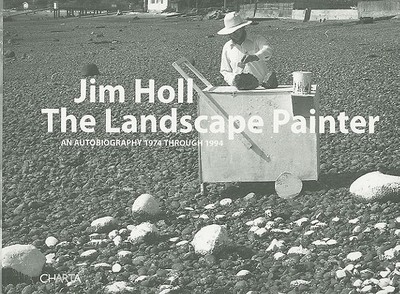Jim Holl’s photo-essay/memoir tells the story of his artistic development while living and working in New York City, from his arrival in 1974 through 1994, and his transits through anti-art, performance art, Land Art, installation art, Pop art, Conceptual art, Relational Aesthetics, painting and sculpture. Students of art will learn useful orientations from Holl’s account.
When the wide-eyed young painter Jim Holl came to New York City in the mid-1970s to study and make art he was shaken by the news that painting, according to the critics, was dead. These polarities — of critic and artist — are also apt writing devices as they mirror Holl’s early struggle to make art. This was a time when aesthetic discourse centered around the critic and philosopher Arthur Danto’s (quoted liberally in the book) interpretations of Hegel’s End-of-Art thesis. Art was no longer meaningful as imitation of nature. It was no longer just about ideas. And it sure wasn’t enough that it just look pretty. So what was art — and who was he as an artist? Hyperconscious and academically informed, Holl ventured into earnest inquiry of different art movements — from anti-art to relational aesthetics — which he went at in a direct way that was critically serious and sometimes humorous.
Holl spent the next 20 years venturing outside the frame to find his place in this post-apocalyptic art world. His memoir, The Landscape Painter: 1974 through 1994, documents his journey from two perspectives, shifting between the satellite vantage of the academic critic (professor at Marymount College) and the reflections of a painter, sculptor and performance artist seeking a genuine voice. The dual narratives create an insightful critical portrait of the late 20th century art world, and makes an edifying read for art students, to whom he directs this well designed photo-essay/memoir.
